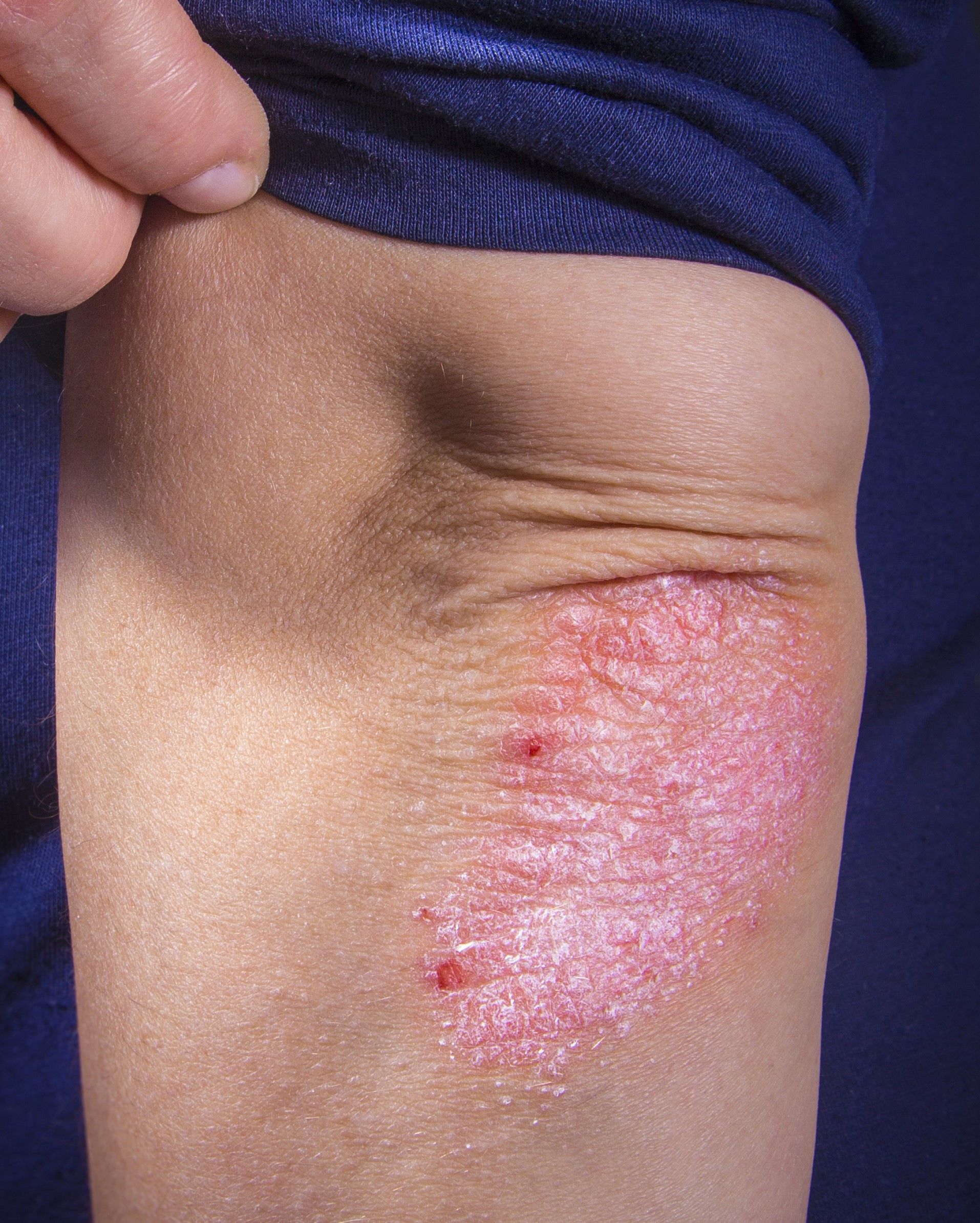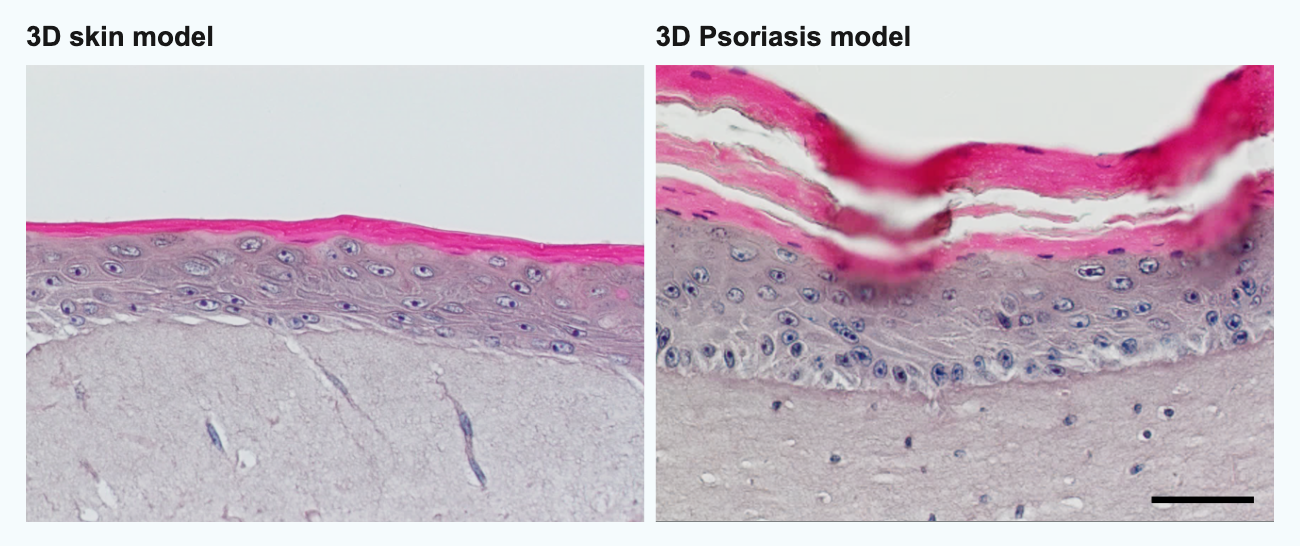

3D in-vitro model to validate immune receptors as targets for the treatment of psoriasis
Psoriasis is a chronic autoimmune disease that affects about two percent of the population worldwide [1]. The disease manifests itself in the form of inflamed and scaly skin areas accompanied by itching and pain. Current psoriasis treatments include systemically acting biologics such as monoclonal antibodies and topically applied hydrocortisone-containing ointments. Often, these therapeutic options are associated with side effects, in some cases severe, or patients do not respond to them.
To identify molecular targets for specific immunomodulatory treatment, in-vitro models are required that represent the pathological hallmarks of human psoriatic skin. These models must be valid, reproducible, and thus suitable for larger test series. In research, mainly mouse models are used, whose relevance is very limited due to their low transferability to humans. Alternatively, models based on patient biopsies are employed, which are not suitable for drug screening due to limited availability of the starting material.
Novel 3D psoriasis skin model
The innovation field Cell and Tissue Technologies of Fraunhofer IGB has successfully established a completely novel 3D psoriasis skin model that circumvents these problems. The basis for the model are human immortalized keratinocytes, which are differentiated in vitro into a multilayered epidermis. By overexpression of the psoriasis-associated transcription factor STAT3 in these keratinocytes, co-cultivation of the epidermis model with in vitro activated T cells and the specific addition of pro-inflammatory cytokines, the psoriasis-typical inflammatory response was successfully mimicked in the models. A comparison with patient biopsies demonstrated the correlation of psoriasis markers in the in-vitro model.
Validation of Toll-like receptors as targets
This model was used to validate receptors of the innate immune system, so-called Toll-like receptors (TLR), as new therapy option for psoriasis. For this purpose, TLR agonists – molecules that activate TLR – were tested with the new psoriasis model and after addition of these agonists the expression of typical psoriasis markers was detected. Finally, a psoriasis model in which TLR2 was knocked-out in keratinocytes showed a significantly reduced expression of psoriasis marker after addition of TLR2 agonists.
Outlook
With the new human 3D in-vitro psoriasis model established at the IGB, Toll-like receptors could be validated as a target for the treatment of psoriasis for te first time. In a next step, molecules with TLR inhibitory activity will be evaluated as potential drugs.
The human 3D in-vitro psoriasis model is perfectly suited for testing new immunomodulatory molecules and has the advantage of being adaptable for other inflammatory skin diseases, such as atopic dermatitis.
 Fraunhofer Institute for Interfacial Engineering and Biotechnology IGB
Fraunhofer Institute for Interfacial Engineering and Biotechnology IGB
